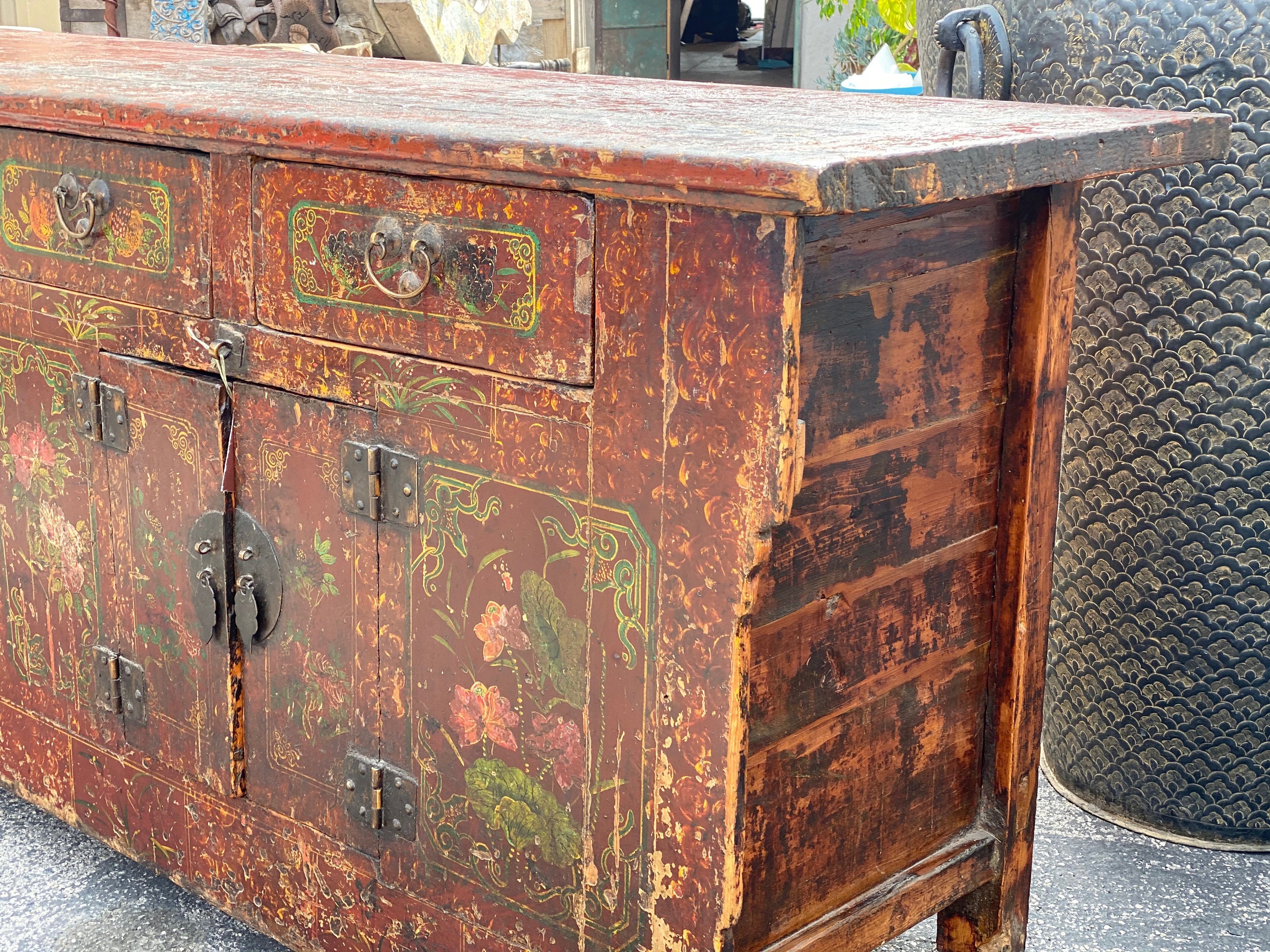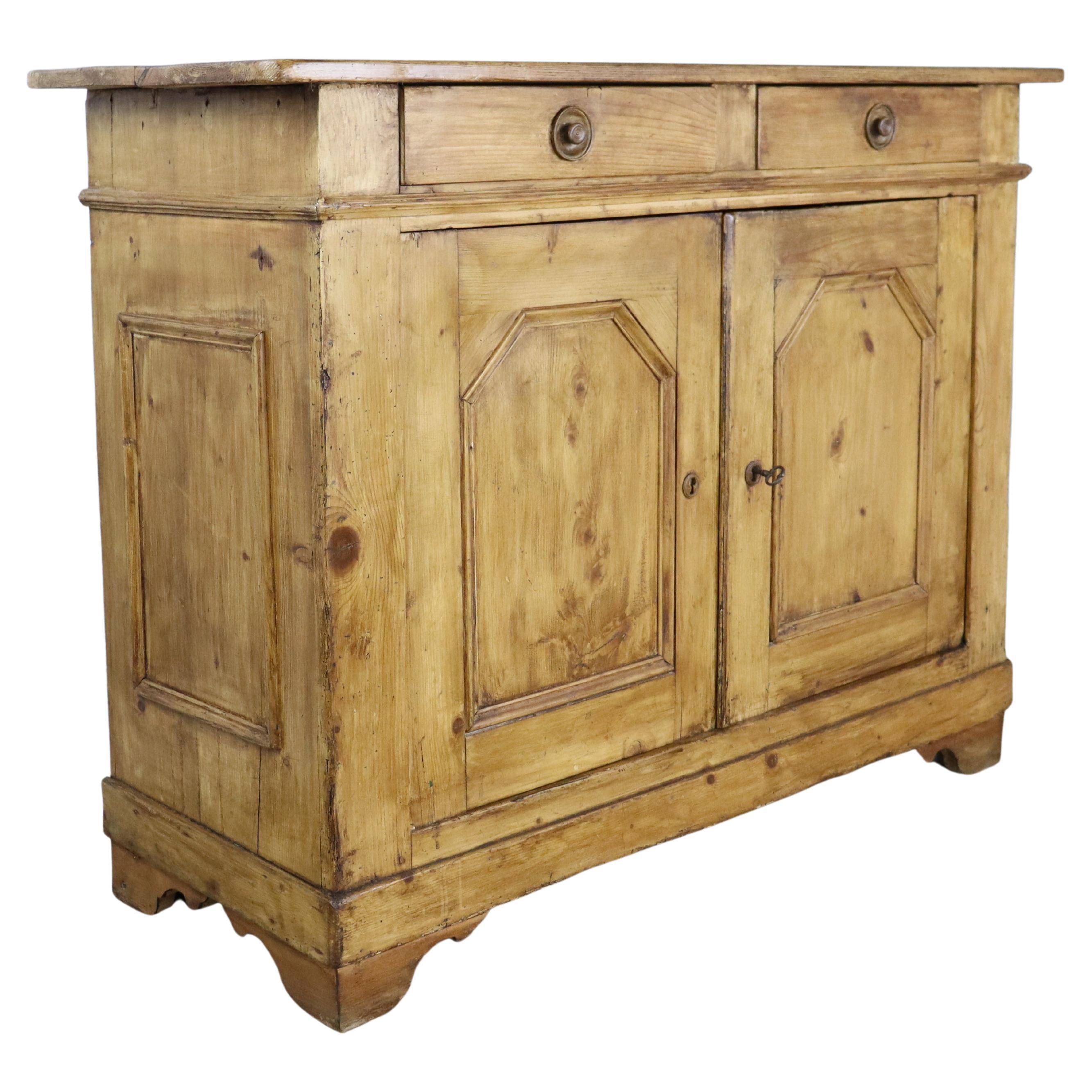Historical Context and Styles of Antique Chinese Buffet Cabinets

Antique Chinese buffet cabinets, often referred to as sideboards or storage chests, represent a fascinating blend of artistry, craftsmanship, and cultural significance. Their evolution mirrors the changing aesthetics and technological advancements across various Chinese dynasties, reflecting the societal values and preferences of each era. Understanding these historical influences provides a deeper appreciation for the unique qualities of these prized antiques.
Evolution of Chinese Buffet Cabinet Design Across Dynasties
The design of Chinese buffet cabinets underwent a significant transformation across different dynasties. Early examples, dating back to the Ming Dynasty (1368-1644), often featured simpler constructions with a focus on functionality. Subsequent dynasties, such as the Qing (1644-1912) and the Republican era (1912-1949), saw increasing ornamentation and stylistic complexity, reflecting the evolving tastes of the ruling classes and the wider population. The transition from the relatively austere Ming style to the more elaborate Qing and Republican styles is a testament to the dynamic nature of Chinese artistic expression. This evolution involved not only changes in ornamentation but also in the types of wood used and the techniques employed in construction.
Comparison of Ming, Qing, and Republican-Era Cabinet Styles
Ming dynasty cabinets are characterized by their restrained elegance, emphasizing clean lines and simple forms. The use of high-quality hardwoods, such as Huanghuali (a type of rosewood) and Zitan (a type of ebony), was paramount. These cabinets often feature minimal carving and ornamentation, focusing instead on the inherent beauty of the wood grain. In contrast, Qing dynasty cabinets display a greater degree of ornamentation. Intricate carvings, often depicting auspicious symbols or scenes from nature, became more prevalent. The use of lacquerware also increased, adding vibrant colors and lustrous finishes. Republican-era cabinets represent a transitional period, often blending elements of earlier styles with Western influences. The use of Western-style hardware and a more eclectic approach to ornamentation were characteristic of this era.
Materials Used in Antique Chinese Buffet Cabinets
The construction of antique Chinese buffet cabinets relied on a variety of high-quality materials, reflecting the craftsmanship and attention to detail that defined Chinese woodworking. Hardwoods such as Huanghuali, Zitan, and red sandalwood were favored for their durability, rich color, and beautiful grain patterns. These woods were carefully selected and meticulously prepared before being assembled into intricate structures. Lacquer was frequently used as a finish, providing both protection and a lustrous sheen. The application of lacquer often involved multiple layers, with each layer carefully polished to achieve a smooth, even surface. Metal hardware, typically made of brass or bronze, was often used for hinges, latches, and decorative accents. These metallic elements added a touch of elegance and further enhanced the overall aesthetic appeal of the cabinets.
Regional Variations in Chinese Buffet Cabinet Styles
Different regions of China developed distinct stylistic preferences in the design of buffet cabinets. These regional variations reflect local traditions, available materials, and cultural influences.
| Region | Wood Preference | Decorative Style | Distinguishing Features |
|---|---|---|---|
| Cantonese | Rosewood, red sandalwood | Intricate carving, bright colors | Often more ornate and flamboyant than other styles |
| Beijing | Huanghuali, Zitan | Simple, elegant lines, minimal carving | Characterized by a more restrained and classic aesthetic |
| Fujian | Various hardwoods, lacquer | Intricate inlay work, often featuring landscapes | Known for their exquisite craftsmanship and attention to detail |
| Shanghai | Mixed hardwoods, lacquer | Combination of traditional and Western elements | Reflects the cosmopolitan nature of Shanghai |
Identifying Authentic Antique Chinese Buffet Cabinets

Authenticating an antique Chinese buffet cabinet requires a keen eye for detail and a thorough understanding of construction techniques, decorative styles, and historical context. The market is unfortunately rife with reproductions and forgeries, making careful examination crucial for discerning genuine antiques from skillful imitations. This guide will provide the tools to navigate this complex area and confidently assess the authenticity of these beautiful pieces.
Construction Techniques
Understanding the construction methods employed in antique Chinese cabinets is paramount for authentication. Genuine antiques often exhibit meticulous craftsmanship using traditional joinery techniques, such as mortise and tenon joints, dovetail joints, and through-tenons. These joints are typically precisely fitted and often reinforced with wooden pegs or dowels. Examine the cabinet’s frame, drawers, and doors closely for these hallmarks. Loose or poorly fitted joints, the use of modern adhesives, or the presence of machine-made components are strong indicators of a reproduction. For example, a genuine Ming Dynasty cabinet would display a level of precision and intricacy in its joinery that is rarely replicated in modern reproductions. The use of hand tools would leave subtle, characteristic marks on the wood, which a trained eye can recognize.
Decorative Elements and Finishes, Antique chinese buffet cabinet
The decorative elements and finishes on an antique Chinese buffet cabinet can offer valuable clues to its authenticity. Genuine antiques often feature hand-painted or inlaid designs, using materials such as mother-of-pearl, jade, or various types of hard woods. The paintwork, if present, should show signs of age and wear, with a natural patina developed over time. Reproductions often exhibit overly bright, uniform colors, lacking the subtle variations and imperfections characteristic of age. Look for signs of wear consistent with age, such as minor scratches, discoloration, or wormholes. However, be wary of overly excessive damage, which could indicate deliberate attempts to artificially age a piece. For instance, a genuine Qing Dynasty cabinet might showcase intricate carvings, meticulously applied lacquer, and subtle variations in color due to the aging process. A modern reproduction might try to mimic these details but often falls short in capturing the nuances of age and craftsmanship.
Provenance and Documentation
Provenance, or the documented history of ownership, is a crucial element in verifying the age and origin of an antique Chinese buffet cabinet. A strong provenance, supported by historical records, auction catalogs, or reputable collector’s documentation, significantly enhances the authenticity of a piece. The absence of any provenance should raise immediate questions. While not always available, documentation linking the cabinet to a specific period or owner adds substantial weight to its claim of authenticity. For example, a cabinet with documented ownership tracing back to a reputable collector or family for several generations carries far more weight than a piece with an unclear history.
Common Forgeries and Reproductions
Many forgeries and reproductions attempt to mimic the styles and techniques of antique Chinese buffet cabinets. Common characteristics of these imitations include machine-made joinery, overly crisp and uniform paintwork, and the use of modern materials. The decorative elements might appear mass-produced or lack the subtle variations found in genuine antiques. Furthermore, some forgeries might incorporate genuine antique elements into a newly constructed piece to create a deceptive hybrid. Careful examination, focusing on the details discussed previously, is essential to identify these attempts at deception. For instance, a reproduction might utilize a style popular during the Qing Dynasty, but its construction techniques and materials would betray its modern origins.
Authenticity Checklist
To summarize the key points, here’s a checklist for assessing the authenticity of an antique Chinese buffet cabinet:
- Examine the joinery: Look for traditional techniques like mortise and tenon, dovetail, and through-tenons. Are the joints precisely fitted and reinforced with wooden pegs?
- Analyze the decorative elements: Assess the quality of hand-painted or inlaid designs. Are the colors and patterns consistent with known historical styles? Are there signs of age and wear?
- Investigate the provenance: Does the cabinet have a documented history of ownership? Is there any supporting documentation?
- Check for signs of modern materials or construction: Are there any indications of machine-made components, modern adhesives, or incongruent materials?
- Assess the overall condition: Does the condition of the cabinet align with its purported age? Is the wear consistent with natural aging, or does it seem artificial?
Care, Preservation, and Restoration of Antique Chinese Buffet Cabinets

Owning an antique Chinese buffet cabinet is a privilege, demanding responsible stewardship. Proper care ensures these exquisite pieces remain beautiful and structurally sound for generations. Neglect, however, can lead to irreversible damage. This section details essential preservation techniques, common problems, and safe handling practices for your valuable heirloom.
Cleaning and Maintenance Techniques
Regular cleaning is paramount for preserving the cabinet’s finish and structural integrity. Avoid harsh chemicals; instead, opt for gentle, pH-neutral cleaners specifically designed for wood furniture. A soft, slightly damp cloth is usually sufficient for dusting and removing surface grime. For stubborn stains, carefully test a small, inconspicuous area with a diluted solution of mild soap and water before applying it more broadly. Always dry the surface thoroughly to prevent moisture damage. Polishing should be infrequent, using only high-quality furniture polish formulated for antique wood. Excessive polishing can strip the original finish. Finally, maintaining a stable indoor climate—consistent temperature and humidity—is crucial in preventing wood expansion and contraction, which can cause cracking and warping.
Addressing Common Issues
Antique Chinese buffet cabinets are susceptible to several issues over time. Wood rot, often caused by prolonged exposure to moisture, manifests as soft, spongy areas. Early detection is vital; if discovered, consult a professional conservator for appropriate treatment, which may involve replacing severely damaged sections with compatible wood. Insect infestation, particularly by wood-boring beetles, can cause significant structural damage. Regular inspection is key, and infestations should be addressed immediately by a qualified pest control specialist experienced in handling antique furniture. Damage repair requires expertise. Cracks and chips can be carefully filled with appropriate wood fillers, matched to the cabinet’s color, and then sanded smooth. More significant repairs, such as broken joints or missing pieces, demand the skills of a professional furniture restorer.
Safe Handling and Transportation
Moving an antique Chinese buffet cabinet requires meticulous care to prevent damage. Before moving, carefully assess the cabinet’s weight and dimensions to ensure you have adequate assistance. Use furniture pads or blankets to protect the cabinet’s finish from scratches and impacts. Secure the cabinet firmly with straps or rope, ensuring even weight distribution. When transporting, avoid abrupt movements and sudden stops. For long-distance moves, consider professional art handling services specializing in antique furniture. These specialists possess the knowledge and equipment to safely transport delicate pieces, minimizing the risk of damage. Proper lifting techniques are also crucial; bend your knees, maintain a straight back, and lift with your legs, not your back. Always have at least two people assist in lifting and moving the cabinet.
